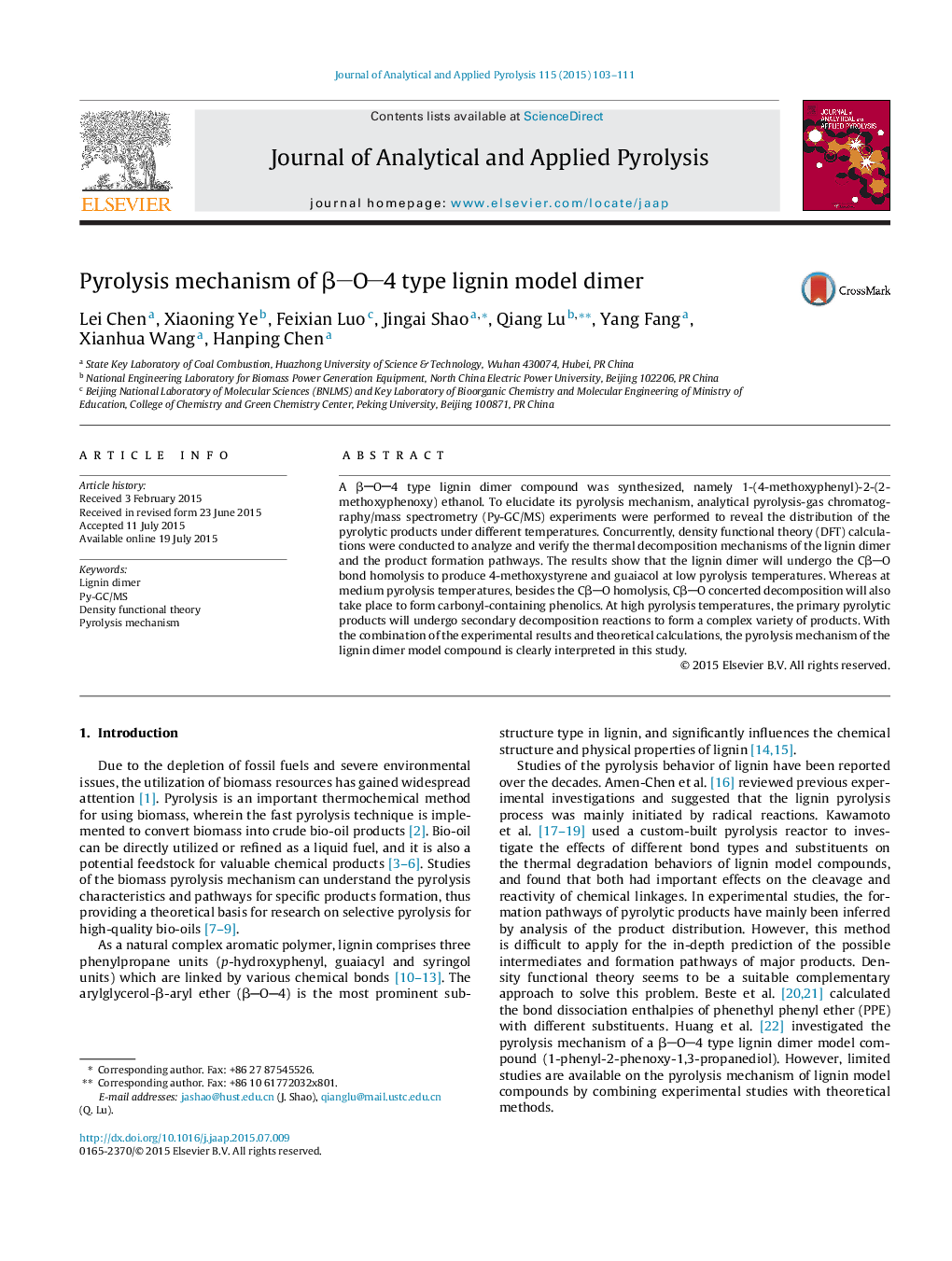| Article ID | Journal | Published Year | Pages | File Type |
|---|---|---|---|---|
| 1197083 | Journal of Analytical and Applied Pyrolysis | 2015 | 9 Pages |
•A βO4 type lignin dimer was synthesized.•Its pyrolysis mechanism was revealed via combined Py-GC/MS experiments and DFT calculations.•CβO homolysis is the major reaction at low temperatures.•CβO homolysis and concerted decomposition co-lead to reactions at medium temperatures.•Secondary decomposition reactions take place at high temperatures.
A βO4 type lignin dimer compound was synthesized, namely 1-(4-methoxyphenyl)-2-(2-methoxyphenoxy) ethanol. To elucidate its pyrolysis mechanism, analytical pyrolysis-gas chromatography/mass spectrometry (Py-GC/MS) experiments were performed to reveal the distribution of the pyrolytic products under different temperatures. Concurrently, density functional theory (DFT) calculations were conducted to analyze and verify the thermal decomposition mechanisms of the lignin dimer and the product formation pathways. The results show that the lignin dimer will undergo the CβO bond homolysis to produce 4-methoxystyrene and guaiacol at low pyrolysis temperatures. Whereas at medium pyrolysis temperatures, besides the CβO homolysis, CβO concerted decomposition will also take place to form carbonyl-containing phenolics. At high pyrolysis temperatures, the primary pyrolytic products will undergo secondary decomposition reactions to form a complex variety of products. With the combination of the experimental results and theoretical calculations, the pyrolysis mechanism of the lignin dimer model compound is clearly interpreted in this study.
